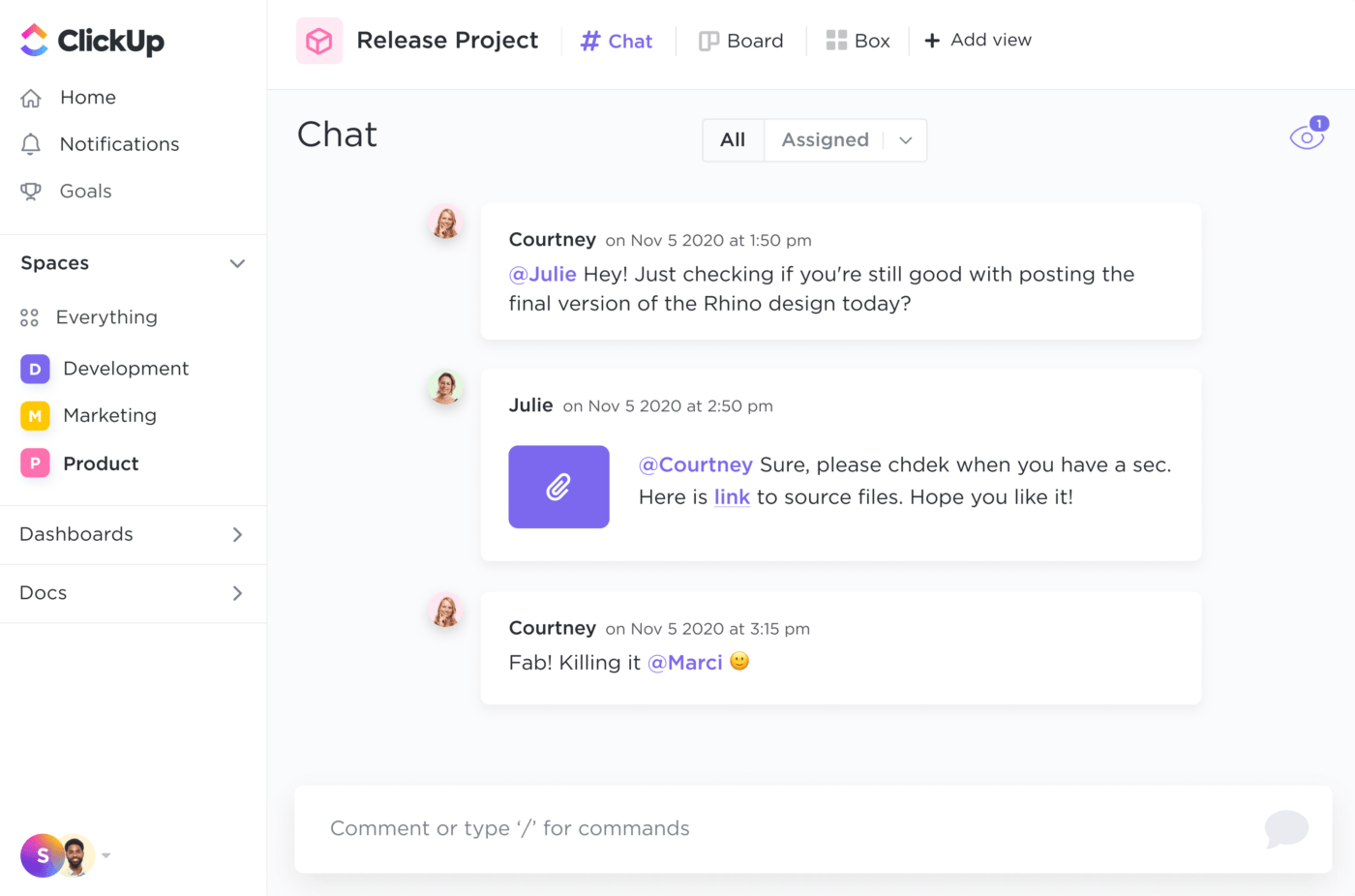Before you read the book, the act of making your bed may not seem like a fulfilling task that evokes a feeling of accomplishment when completed. It is a mundane chore at best.
However, Admiral William Mc Raven, in his book Make Your Bed: Little Things That Can Change Your Life…And Maybe the World says otherwise. He presents it as a deep metaphor for handling life’s toughest moments. He talks about how small, deliberate actions can be a window to a life of discipline, resilience, and fulfillment.
Make Your Bed takes readers on a journey of self-improvement, helping them unravel the secrets to conquering adversities.
In this Make Your Bed book summary, we pick out the nuggets of vital learnings from the treasure trove of life lessons from the toughest military training programs in the world—the SEAL training.
But before that, if you’re interested in reading more book summaries, check out our curated collection of 25 Must-Read Productivity Book Summaries (including ‘Make Your Bed’) in one place. You can save, edit, bookmark, and even export it for later use.
- Make Your Bed: The Book at a Glance
- Essential Lessons from Make Your Bed Book by William H. McRaven
- 1. Start the day off by making your bed
- 2. Find someone to help you paddle
- 3. Measure a person by the size of their heart
- 4. Get over being a sugar cookie and keep moving forward
- 5. Don’t be afraid of the circuses
- 6. Slide down the obstacle head-first
- 7. Don’t back down from the sharks
- 8. Be your very best in the darkest moments
- 9. Start singing when you’re up to your neck in mud
- 10. Don’t ever, ever ring the bell
- Popular Quotes from Make Your Bed: Little Things That Can Change Your Life…And Maybe the World
- How to Apply Learnings from the ‘Make Your Bed’ Book with ClickUp
- Excel in Making Your Bed— and Much More—with ClickUp
⏰ 60-Second Summary
In Make Your Bed: Little Things That Can Change Your Life…And Maybe the World, Admiral William McRaven distills life-changing lessons from his Navy SEAL training, emphasizing how small, disciplined actions lead to success and resilience.
Key Takeaways:
- Start the day with a completed task: Making your bed sets a positive tone for the day and cultivates discipline.
- Teamwork is essential: Success is rarely achieved alone—collaboration and mutual support are key.
- Resilience in adversity: Overcome challenges with determination and a strong sense of purpose.
- Don’t fear failure: Embrace setbacks as opportunities for growth and keep moving forward.
- Face challenges head-on: Approach obstacles proactively, visualizing them as opportunities to learn and succeed.
Apply Make Your Bed Lessons with ClickUp:
ClickUp helps you build habits, manage tasks, and collaborate effectively, so you can start your day on the right note, tackle challenges head-on, and measure your team’s resilience.
📌 Inspired? Apply these lessons with ClickUp today! 🚀
Make Your Bed: The Book at a Glance

The book Make Your Bed originated from a profound commencement speech by Admiral William H. McRaven. While addressing the graduates of The University of Texas, Austin, the Navy veteran shared his insights from SEAL training and how it contributes to character building. It is an inspirational guide emphasizing the values of success, resilience, and persistence while navigating life’s challenges.
Before diving into the depths of Make Your Bed summary, here’s a quick overview of the book:
- Author: Admiral William H. McRaven
- No. of Pages: 144 pages
- Goodreads Rating: 4.0/5.0
- Year Published: April 4, 2017 (First edition)
- Publisher: Grand Central Publishing
- Estimated Reading Time: 2.5 hours
- Listening Length: 2 hours
Essential Lessons from Make Your Bed Book by William H. McRaven
In Make Your Bed, Admiral William McRaven draws inspiration from his experiences during the Navy SEAL training to share valuable life lessons.
Here are 10 lessons from the book that will transform your personal and professional goals:
1. Start the day off by making your bed
McRaven opens by talking about how his instructors, who were SEAL combat veterans, would inspect the beds first thing in the morning. A well-made bed had square corners, tight covers, a centered pillow positioned just below the headboard, and an extra blanket folded neatly at the base of the rack.
The daily habit was no challenge for those willing to undergo a strenuous 6-month basic training to become Navy SEALs. However, it had a lasting impact on their psyche.
Making the bed set a positive tone for their day. It is a sign of discipline and offers a sense of pride—you complete a task as soon as the day begins! The feeling of accomplishment bright and early will motivate you to conquer the following tasks until the day’s done.
Even on bad days when you do not experience the ripple effect of productivity, you can always come back to a bed made and take solace that tomorrow would be better.
It highlights how sometimes the simple act of making your bed correctly could be the foundation of excellence and a positive attitude. Committing to small tasks with precision and consistency cultivates habits that influence larger aspects of our lives.
2. Find someone to help you paddle
McRaven then focuses on the importance of teamwork.
He talks about how Navy SEAL students were divided into boat crews of seven to paddle a small rubber boat miles down the West Coast. Six students, three on each side, were responsible for the paddling, while one would take charge as the coxswain.
Navigating the Pacific Ocean coast was no easy feat, unlike making a bed, with the winter surf peaking 8-10 feet high. Everyone had to work together. Those paddling had to exert equal effort to keep the boat balanced and moving. Similarly, the coxswain (the person in charge of a boat) had to synchronize every paddle stroke and expertly navigate the seas.

The idea that you must find someone to help you paddle is a testament to a universal human experience—success is rarely a solitary endeavor. Those looking to change the world must rely on strong relationships and a supportive network to make the voyage more manageable.
Working in a team requires trust, communication, and mutual reliance to navigate personal and professional complexities. Seeking help in these moments will improve the likelihood of triumph and ease the burden of the journey.

So, make as many friends as possible and help them as they help you. After all, true strength lies in unity.
3. Measure a person by the size of their heart
Continuing with the above anecdote, Admiral William McRaven talks about how the class of 150 students dwindled to a mere 42 in just a few weeks of Navy SEAL training. With just seven boat crews remaining, everyone wanted to belong to the crew with the tall, buff guys.
However, the most exceptional performers were a bunch of ‘misfits’—called the munchkin crew.
The munchkin crew included an American Indian, an African American, a Polish American, a Greek American, an Italian American, and two kids from the Midwest, all five feet five inches or less. However, they outdo all the other teams in paddling, swimming, and running.
This Navy SEAL training was a humbling experience for the big guys who made fun of the little flippers the munchkins put on, only to eat their dust later. It made McRaven realize that no external appearance, social parameter, or superficial metrics can grade someone’s grit, endurance, and willpower.
Success depends on daring greatly, and the munchkins proved that only the size of their hearts matters as it dramatically overshadows the size of their flippers.
4. Get over being a sugar cookie and keep moving forward
Next in the Navy SEAL training came the part where the instructors carried out a weekly uniform inspection. The evaluation was meticulous and stringent, with very high standards to match.
Students had to have a perfectly starched hat, an immaculately ironed uniform, and a shiny, smudge-free belt buckle to pass this inspection. The students gave it their all, but the instructors would discover something amiss despite their hard work.
Cue the punishment.

Students then had to brave the surf zone, fully clothed. Once they were wet from the head to their toes, they had to roll around on the beach until they were caked in sand. They called this sugar cookie. The sugar cookies had to stay in this state throughout the day: cold, wet, and gritty with sand.
Of course, it was discouraging to several students who became sugar cookies no matter how they tried. They didn’t understand that the system was created to make everyone a sugar cookie. The lesson was that failure is a part of life, and you must learn how to roll with the punches. The objective is to get over the self-pity and keep moving forward.
5. Don’t be afraid of the circuses
Continuing with the theme of accepting failure as a possible outcome of an endeavor, McRaven discusses the circus list.
The Navy SEAL training is physically and mentally challenging. Students must participate in activities like long runs, obstacle courses, long swims, hours of calisthenics, and more.
Each activity had specified standards to be met within a prescribed schedule. Failure to do this would result in being placed on the circus list. The list was posted at the end of the day, and those shortlisted had to put in two additional hours of calisthenics.

Ending up on the circus meant two things:
- Your performance didn’t measure up for the day
- You’re going to be more fatigued the following day, which could potentially subdue your performance—enough to get you on the next day’s circus list
Nobody wanted to be on the circus list, but there were a few recurring names. The extra two hours of calisthenics strengthened them even more. The pain forged strength and resilience.
McRaven believes that life is full of circuses and that failing will be painful. However, failures teach us resilience and persistence, making us stronger and one step closer to success.
6. Slide down the obstacle head-first
Students had to run an obstacle course at least twice weekly during the Navy SEAL training.
The obstacle course featured 25 obstacles, such as a 10-foot wall, 30-foot cargo net, barbwire crawl, and more. However, the most intimidating of the lot was the Slide for Life.
It had a three-tiered 30-foot tower at one end and a single-tier tower at the other, between which was a 200-foot-long rope. Trainees had to climb the larger tower, grab the rope, and reach the other end. They would suspend their bodies under the rope and inch across, pulling their body weight hand after hand.
Until one day, one brave trainee mounted the top of the rope and launched himself head-first down the line. This seemingly foolish and risky approach helped him break the record for the obstacle!

Setting aside the mechanics or logistics of the approach, it becomes evident that tackling challenges head-on directly and assertively is more effective in charting the path to success.
Rather than allowing fear and uncertainty to cloud our judgment, we must visualize challenges as opportunities to grow and learn. Head-on confrontation of these challenges cultivates resilience and grit, preparing us for anything life throws our way.
7. Don’t back down from the sharks
During the land warfare phase of basic SEAL training, students are flown to San Clemente Island, just off the coast of San Diego. The waters here are breeding grounds for great white sharks.
To pass the SEAL training, students must complete long swims, some even in the pitch dark of the night. Before departing on this journey, instructors would brief the students on the different species of sharks inhabiting the waters.
They start by assuring students that no shark has ever eaten anybody. Then, they share some survival skills, such as standing your ground if a shark starts circling your position.
The instructors tell the students to avoid swimming away or acting afraid, as sharks can sense fear. Finally, if a shark were to attack, students are taught to punch them on the snout with all their might. This will cause them to turn and swim away.
Equipped with this knowledge, the students swim through the shark-infested waters and complete their tasks.

Through this, McRaven teaches the lessons of courage and steadfastness. You’ll come across several sharks in your life—that’s inevitable. The goal is to remain calm while facing these formidable challenges.
8. Be your very best in the darkest moments
In the next part of ‘Make Your Bed,’ McRaven gives some background on how Navy SEALs perform underwater attacks. A pair of SEAL divers are dropped off outside the enemy harbor. These divers only have a compass and a DEF gauge to guide them to the target as they swim two miles underwater.
During a large portion of this swim, they have moonlight, ambient light, and surrounding streetlamps to illuminate the way. Plus, they are comfortable knowing they’re swimming in open waters.

However, as they draw closer to the target ship, the vessel blocks the light. Since the objective of the exercise is to find the ship’s keel, the divers have to get to the deepest parts.
Making your way to the darkest part of the ship, devoid of light and overwhelmed by the loud sounds of the ship’s machinery, is one of the most anxious moments of the mission. The effect can be mentally disturbing to the extent that it jeopardizes the mission.
But in these darkest moments, the Navy SEALs must remember to stay focused and composed. Stepping out from such dark moments helps them recall their physical prowess, tactical skills, and inner strength and emerge as victors.
This poignant lesson highlights how the dark moment illuminates our true character. Strive to be your best even in difficult times, and you will cultivate the perseverance to thrive in adversity.
9. Start singing when you’re up to your neck in mud
The ninth week of SEAL training is known as Hell Week. This seven-day endurance test involves no sleep or rest and constant physical and mental harassment.
On the Wednesday of Hell Week, students are taken to a swampy patch called the mudflats. They must endure 15 hours in the mudflats battling the howling winds, freezing cold, and the instructors’ pressure to quit SEAL training.
McRaven’s Hell Week had his class dig deep in the cold mud and sit in these holes as the sun began to set—a punishment for an infraction. The mud closed in on all students, with only their heads above the ground.
The instructors told the class they would let everyone out of the mud if five men quit. They still had about eight hours of training left and the night’s cold to bear. Naturally, several trainees looked like they were about to quit.

Until one loud voice rang out in a song. The song was out of tune but enthusiastic, causing others to start singing. Somehow, this simple rebellion tuned out all the discomforts and gave people hope to endure the mudflats.
McRaven reminds us that we will find ourselves neck-deep in mud someday. However, success depends on giving people hope. Those who dare greatly ignite hope and possess the power to change the world.
10. Don’t ever, ever ring the bell
The final lesson in Make Your Bed is never to ring the bell.
In the SEALs training campus, a brass bell hangs in the compound’s center. The bell is for all students to see—it is their key to quitting the training and returning to a life where they no longer have to follow bed-making code, become a sugar cookie, swim with sharks, or sit neck-deep in mud. Ringing the bell gets you out.

Despite the lure of a life of normalcy where every day is no longer a test of endurance, McRaven advises against ringing the bell. After all, ringing the bell is a metaphor for surrendering, submitting to challenges, and abandoning their goal. By refusing to ring the bell, individuals can set immovable goals, tap into strong resolve, and persevere through hardships until they reach success.
💡📚 Enjoyed reading this? You’ll also love our curated collection of 25 Must-Read Productivity Book Summaries. You can save, edit, bookmark, and even export it.

Popular Quotes from Make Your Bed: Little Things That Can Change Your Life…And Maybe the World
Here are a few popular quotes from the book Make Your Bed:
How to Apply Learnings from the ‘Make Your Bed’ Book with ClickUp
Start the day with a task completed
A project manager’s day starts by setting the agenda, organizing activities, conducting team meetings, taking stock of any backlog, and catching up on emails and messages. These are routine tasks but crucial nonetheless—something as symbolic as making your bed!

Use ClickUp to set daily goals, centralize communications, manage change requests, and orchestrate tasks and activities. The self-discipline of following the routine methodically helps you start the day with a completed task!
Staying on top of these everyday responsibilities kickstarts the day positively and helps you check one item after another off your list.
Small, deliberate actions cultivate discipline
Use ClickUp’s Task Management to organize your tasks. Set deadlines, assign priorities, identify dependencies, create recurring tasks, notify stakeholders, and more.

ClickUp allows you to track and complete tasks, follow through on your commitments and cultivate a sense of discipline in your work. Your team will also appreciate the order and structure available through ClickUp.
They will also be more engaged in the work at hand as they visualize the impact of every activity in goal attainment as teams inch towards the larger objective.
📮ClickUp Insight: 92% of knowledge workers risk losing important decisions scattered across chat, email, and spreadsheets. Without a unified system for capturing and tracking decisions, critical business insights get lost in the digital noise. With ClickUp’s Task Management capabilities, you never have to worry about this. Create tasks from chat, task comments, docs, and emails with a single click!
Find someone to help you paddle
ClickUp is all about teamwork and collaboration. It is a highly versatile platform that allows businesses to set up shared workspaces so that teams can collectively organize tasks, documents, and communication over a centralized location. Such an arrangement breaks through siloes and allows everyone to paddle together.

ClickUp supports various communication channels, such as chat, comments, and notes, through which team members can discuss project specifics, share updates, and collaborate.
Teams can come together and brainstorm ideas using ClickUp Whiteboard or commit to creating, editing, and collaborating on documents using ClickUp Docs.
All in all, ClickUp is a collaboration powerhouse that will help you tame the highest surfs!
Start singing when you’re up to your neck in mud
Regarding collaboration, ClickUp makes it possible through intentional, meaningful, and value-loaded communication.
Communication is the song that keeps the morale high when things get challenging. It offers assurance when projects turn awry and things look bleak.

ClickUp patches teams together through various communication channels to help them sing to each other. The Chat View allows teams to communicate with each other in real-time, while ClickUp Email Management takes care of asynchronous communication.
So, whether it is sharing updates or announcing the fallback on Plan B, ClickUp ensures that the teams are all singing the same tune while braving the winds.
Slide down the obstacle head-first
In Make Your Bed, McRaven encourages readers to approach challenges proactively. ClickUp supports this mindset through effective goal-setting.
ClickUp Goals allow users to take on challenges head-on by breaking them down into smaller, manageable tasks.

The resulting work breakdown structure with specific and measurable targets allows teams to face complex problems or projects with tight deadlines fearlessly. Teams can set daily, weekly, and monthly goals and automatically track their progress in real-time.
Effective goal management also contributes to project flexibility, as you can respond to change requests instantly and execute a change management plan by revising the goals.
Only the size of your heart matters
They say success is the ability to go from failure to failure without losing heart.
ClickUp allows teams to dare move on while ensuring that one’s faith remains unshakeable. Use ClickUp Dashboards to measure and track various metrics and key performance indicators (KPIs).

Even if your project is slow to take off, ClickUp allows you to reevaluate all your moves and activities. This allows you to stay on track for continuous improvement and eliminate the fear of failure. Acknowledging failures and treating them as an opportunity for learning will help you forge forward.
Excel in Making Your Bed— and Much More—with ClickUp
Make Your Bed is an excellent story of discipline, perseverance, and fortitude. Don’t just read the book; apply its ten lessons in your personal and professional life, and you’ll be no less than a Navy SEAL in whatever you choose to do.
Train your military units using tools like ClickUp until they no longer fear failure and make their metaphorical bed perfectly. Sign up for free to learn more!





